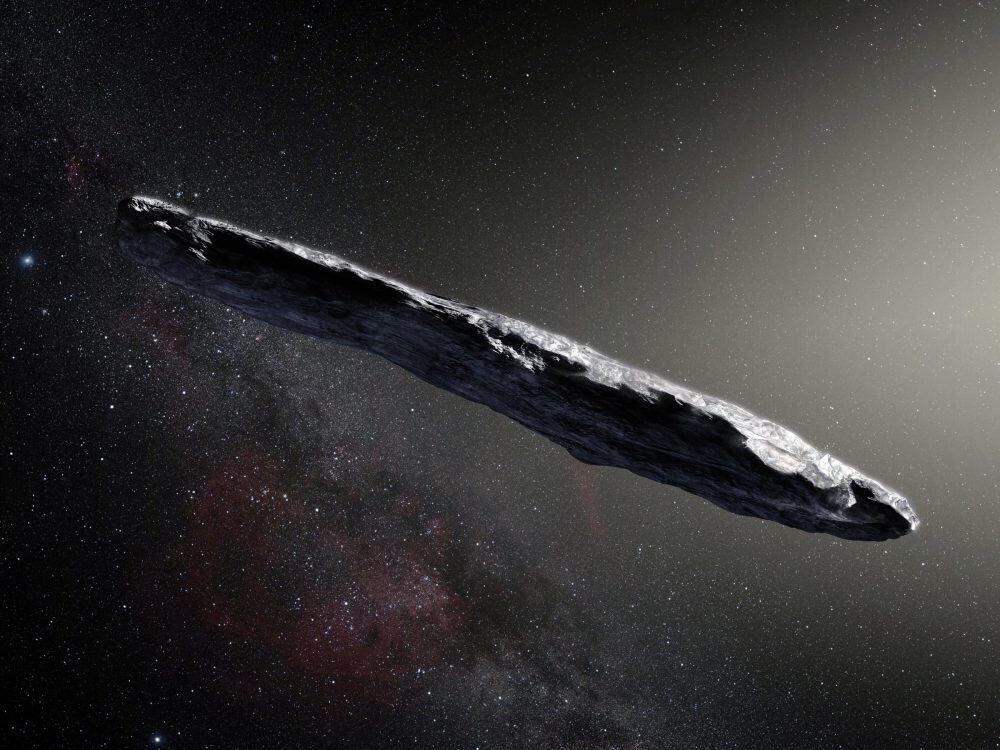The Cosmos with Oumuamua
If there’s one story that left astronomers truly scratching their heads in 2018, it had to be the mysterious interstellar visitor known as Oumuamua. The odd cigar-shaped object flew through our Solar System in late 2017, and researchers spent much of last year just trying to figure out what the heck it was.
Theories are many, and scientists have suggested the usual suspects including a comet or asteroid, as well as more “out there” possibilities like an alien ship or probe. Now, one veteran astronomer is offering an entirely new theory, and he thinks he might have the evidence to back it up.
ʻOumuamua (/ʔoʊˌmuːəˈmuːə/, Hawaiian: [ʔowˌmuwəˈmuwə] (![]() listen)) is the first interstellar object detected passing through the Solar System. Formally designated 1I/2017 U1, it was discovered by Robert Weryk using the Pan-STARRS telescope at Haleakala Observatory, Hawaii, on 19 October 2017, 40 days after it passed its closest point to the Sun. When first seen, it was about 33,000,000 km (21,000,000 mi; 0.22 AU) from Earth (about 85 times as far away as the Moon), and already heading away from the Sun.
listen)) is the first interstellar object detected passing through the Solar System. Formally designated 1I/2017 U1, it was discovered by Robert Weryk using the Pan-STARRS telescope at Haleakala Observatory, Hawaii, on 19 October 2017, 40 days after it passed its closest point to the Sun. When first seen, it was about 33,000,000 km (21,000,000 mi; 0.22 AU) from Earth (about 85 times as far away as the Moon), and already heading away from the Sun.
ʻOumuamua is a small object, estimated to be about 100 m–1,000 m × 35 m–167 m × 35 m–167 m (328 ft–3,281 ft × 115 ft–548 ft × 115 ft–548 ft) in size. It has a dark red color, similar to objects in the outer Solar System. ʻOumuamua showed no signs of a comet coma (atmosphere) despite its close approach to the Sun, but underwent non-gravitational acceleration. This effect is seen in many icy comets, although other reasons have been suggested. Nonetheless, the object could be a remnant of a disintegrated interstellar comet (or exocomet), according to a NASA scientist. The object has a rotation rate similar to the average spin rate seen in Solar System asteroids, but is more elongated than all but a few other natural bodies. While a strengthless object (rubble pile) would require it to be of a density similar to rocky asteroids, a small amount of internal strength similar to icy comets would allow a relatively low density. ʻOumuamua is tumbling, rather than smoothly rotating, and is moving so fast relative to the Sun that there is no chance it originated in the Solar System. It also means that ʻOumuamua cannot be captured into a solar orbit, so it will eventually leave the Solar System and resume traveling through interstellar space. ʻOumuamua’s system of origin and the amount of time it has spent traveling amongst the stars are unknown.
